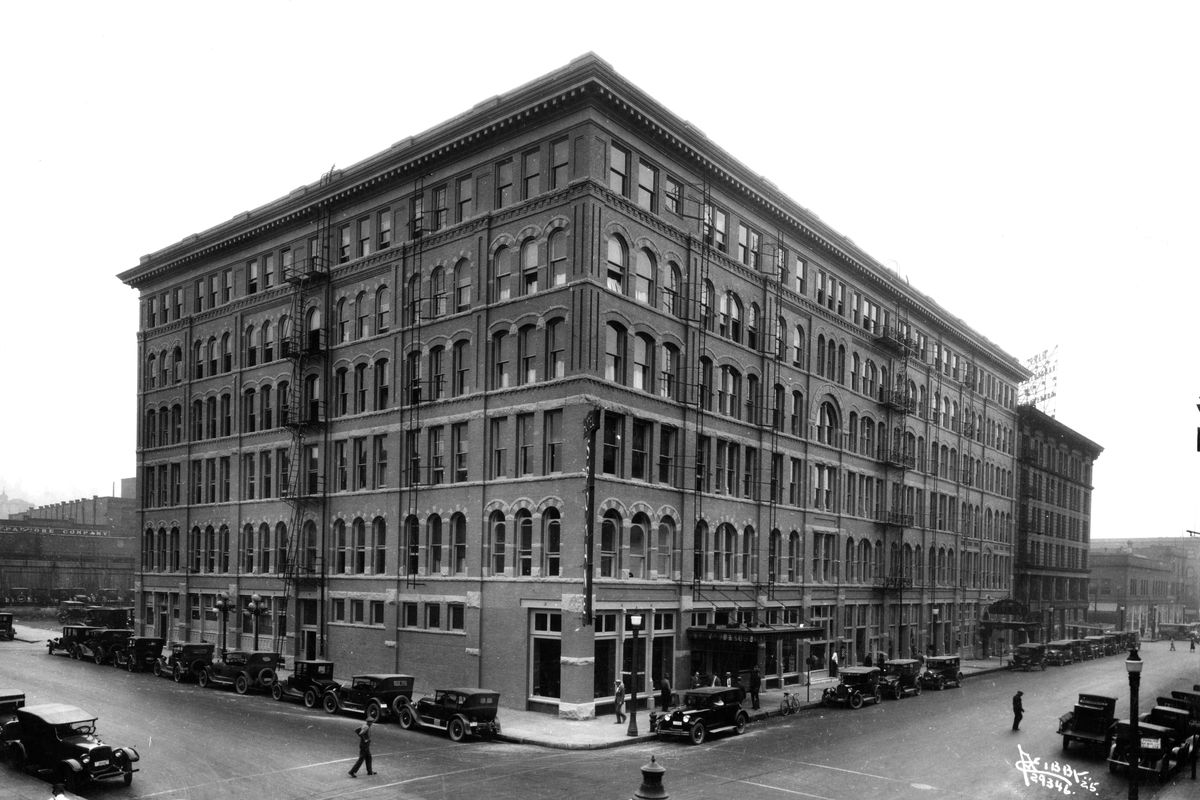Then and Now: Hotel Spokane and Clarence Taylor

A partially completed three-story warehouse that survived the 1889 fire was quickly redesigned as a grand hotel. In the chaotic days following the fire, the shell was purchased by a group of partners and built into the five-story Hotel Spokane, the grandest the city had yet seen.
The exterior and all 200 rooms were lit with electric lights. Shortly after opening, the hotel became the second in the country to install a telephone in every room. The hotel’s restaurant could seat hundreds of patrons and featured a giant fireplace where roast beef turned on a spit while a cook basted it with drippings. In 1903, the restaurant was named The Silver Grill.
In that era, the Hotel Spokane and other restaurants and clubs employed many African-Americans as waiters, cooks and in other service jobs. One day in 1902, hotel owner Ben Norman was awakened by a black youngster yelling loudly on the street below, selling newspapers outside the hotel. Although initially annoyed, Norman hired Clarence Taylor on the spot. Taylor was 12.
Through the decades, Taylor moved up to wine steward, waiter and eventually the maître d’hotel. But Taylor was best known to generations of Spokane diners as the tableside carver of prime ribs and turkeys, serving from an elegant wheeled cart. He served Bing Crosby, Theodore Roosevelt and Herbert Hoover. Williams Jennings Bryan told him “that was the finest beef I have ever eaten.” Clad in immaculate whites and a chef’s hat, Taylor didn’t bother to tell Bryan he wasn’t the cook.
In 1927, new hotel management made an unexplained change. Twelve young white women in black dresses with white cuffs, collars, stockings and hats replaced the restaurants’ black waiters, whom The Spokesman-Review called “an institution at the Silver Grill.”
“The public expects changes, new ideas,” said manager Frank E. Bond. “The public likes the change and spoke of it in complimentary terms.” The black workers were retained for banquet services and other jobs.
But Taylor survived the racism of the era and ups and downs of the old hotel, which went into foreclosure a number of times throughout its history. Clarence Taylor waited on one couple, Mr. and Mrs. J. Matt Johnson, at their wedding dinner and also at their golden anniversary dinner 50 years later. He was a favorite of the customers, most of whom he knew by name.
The much newer Ridpath Hotel purchased the old hotel to tear it down and build the Ridpath Motor Inn. The last meal Taylor served there was on Christmas Day, 1961. When the hotel was shuttered, Taylor, at age 72, went to work at the Ridpath’s rooftop restaurant for several more years. He died in 1974 at age 83.
In a 1959 tribute to Taylor, The Spokesman-Review wrote, “Clarence has become as well known as the hotel itself. His tall white chef’s hat and the silver service cart he pushes have remained the reason thousands of patrons return for every family occasion to Clarence and the hotel.”
Jesse Tinsley